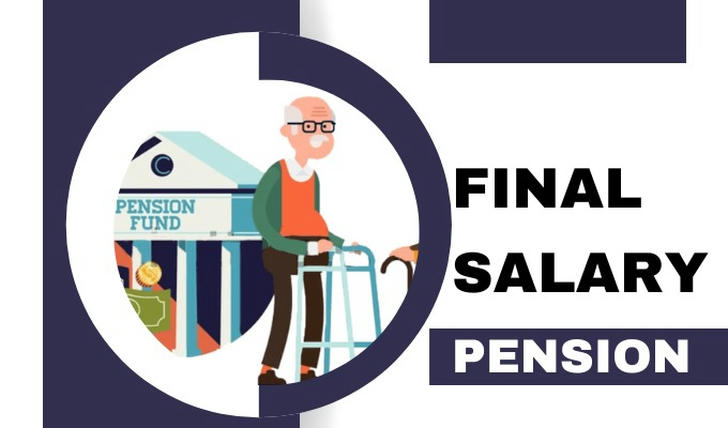A Comprehensive Guide to Pensions: Understanding Your Retirement Savings
Pensions are a crucial part of financial planning, ensuring individuals have sufficient income to support themselves during retirement. In the United States, retirement income comes from multiple sources, including Social Security, employer-sponsored plans, and personal savings. Understanding the different pension options available can help individuals maximize their retirement savings and financial security.

What is a Pension?
A pension is a long-term savings plan designed to provide income during retirement. Individuals contribute to their pension throughout their working lives, often with employer contributions and government incentives. Upon retirement, the pension is used to provide a steady income stream.
Types of Pensions in the United States
Pensions in the U.S. primarily fall into three categories: Social Security, employer-sponsored retirement plans, and individual retirement accounts (IRAs).
1. Social Security
The Social Security program is a government-backed system funded by payroll taxes. It provides retirement benefits to eligible workers based on their earnings history and the number of years they have contributed to the system.
Eligibility for Social Security
To qualify for Social Security benefits, individuals must have accumulated at least 40 credits, which typically equates to ten years of work. The amount received is determined by lifetime earnings and the age at which benefits are claimed.
How Much is Social Security?
As of 2024, the average monthly Social Security retirement benefit is around $1,907, though this amount varies based on individual earnings and claiming age. Claiming benefits at full retirement age (FRA) (typically between 66 and 67) ensures the full amount, while early claims (as early as 62) reduce benefits. Delaying until age 70 increases benefits.
2. Employer-Sponsored Retirement Plans
Employers in the U.S. offer retirement savings options through defined benefit and defined contribution plans.
Defined Benefit (DB) Plans
- Also known as traditional pensions, these provide a guaranteed income for life based on salary and years of service.
- Employers fund and manage these plans, making them a reliable retirement income source.
- Commonly found in government jobs and some large private companies.
Defined Contribution (DC) Plans
- Employees and employers contribute to an investment fund, with the final pension amount depending on investment performance.
- The most common type is the 401(k) plan, where employees contribute pre-tax earnings, often with an employer match.
- Other plans include 403(b) (for non-profit organizations) and 457 plans (for government employees).
3. Individual Retirement Accounts (IRAs)
For those without access to employer-sponsored plans or looking to supplement their savings, IRAs offer tax-advantaged retirement savings options.
Traditional IRA
- Contributions may be tax-deductible, reducing taxable income in the contribution year.
- Taxes are paid upon withdrawal in retirement.
Roth IRA
- Contributions are made with after-tax income, but withdrawals in retirement are tax-free.
- No required minimum distributions (RMDs), making it a flexible option.
SEP & SIMPLE IRAs
- Designed for self-employed individuals and small businesses.
- SEP IRAs allow high contribution limits, while SIMPLE IRAs offer employer-matching contributions.
How to Maximize Your Pension Savings
Ensuring a comfortable retirement requires strategic planning. Here are key steps to maximize pension savings:
1. Start Early
Starting early allows more time for investments to grow through compounding. Even small contributions can significantly impact long-term savings.
2. Take Advantage of Employer Contributions
Many employers offer matching contributions in 401(k) plans. Contributing enough to get the full employer match is essentially money that boosts retirement savings.
3. Utilize Tax Benefits
- 401(k) and Traditional IRA contributions reduce taxable income.
- Roth IRA contributions grow tax-free, providing a tax-efficient retirement income.
4. Diversify Investments
Balancing investments across stocks, bonds, and other assets reduces risk and optimizes returns.
5. Monitor Pension Performance
Regularly reviewing pension statements and adjusting contributions based on financial goals ensures savings stay on track.
Retirement Options: How to Access Your Pension
Upon reaching retirement age, individuals can access their pensions in several ways:
1. Social Security Benefits
- Claiming at full retirement age (66-67) provides the standard benefit.
- Claiming early (at 62) reduces benefits permanently.
- Delaying until age 70 increases monthly benefits.
2. Annuities
An annuity provides a guaranteed income for life in exchange for a lump sum. Fixed annuities offer stable payments, while indexed annuities increase over time to keep pace with inflation.
3. Pension Drawdown
With 401(k) plans and IRAs, retirees withdraw funds as needed. Required Minimum Distributions (RMDs) start at age 73 (as of 2024) for traditional retirement accounts.
4. Lump Sum Withdrawals
Some employer pension plans offer lump sum payouts, but taking large withdrawals at once can lead to significant tax burdens.
Common Pension Mistakes to Avoid
1. Relying Solely on Social Security
Social Security alone may not provide enough income to maintain a comfortable lifestyle.
2. Not Taking Full Advantage of Employer Plans
Missing out on employer-matching contributions means losing potential retirement income.
3. Ignoring Inflation
Inflation erodes purchasing power, so investment growth must outpace inflation to maintain income levels.
4. Withdrawing Funds Too Early
Cashing out retirement accounts before age 59½ can result in penalties and taxes, reducing long-term savings.
The Future of Pensions in the U.S.
With increasing life expectancy and changing workforce trends, the future of pensions continues to evolve:
- Social Security reform is a topic of political debate, with potential changes to benefits or funding structures.
- Auto-enrollment in retirement plans is becoming more common to encourage savings.
- Sustainable and ESG (Environmental, Social, and Governance) investments are gaining traction in retirement funds.
- Financial technology (FinTech) tools are making pension management more accessible.
Conclusion
Understanding pensions and making informed decisions about retirement savings is crucial for financial security. Whether through Social Security, employer-sponsored plans, or personal retirement accounts, maximizing contributions, leveraging tax benefits, and planning withdrawals wisely can lead to a comfortable and stable retirement. By staying proactive and adjusting pension strategies over time, individuals can ensure a secure financial future.
